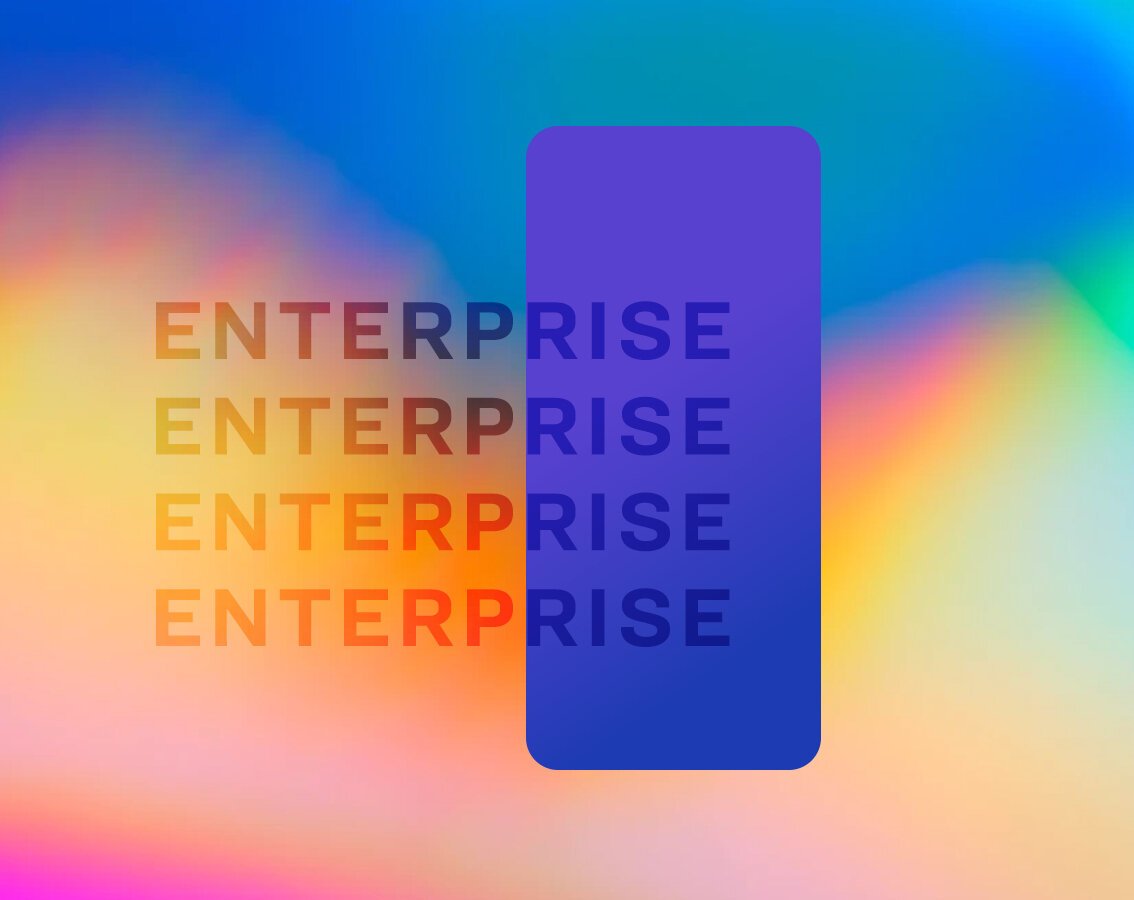blog
Connecting the Dots: A Primer on What Is Enterprise Application Integration
By Mohan S Business Software development App development Enterprise Mobility November 26, 2023

Today's businesses rely on a multitude of enterprise applications and systems to manage various aspects, including supply chain management, enterprise resource planning (ERP), and customer relationship management (CRM).
Enterprise application integration, or EAI is the process of integrating different software applications, systems, and databases within an organization to facilitate smooth information exchange, communication, and functionality.
EAI facilitates enterprise mobility management, ensuring data consistency, accuracy, and accessibility in real-time. By integrating these systems, EAI enables organizations to make better-informed decisions, improve productivity, reduce operational costs, and respond swiftly to changes in the market. Ultimately, EAI fosters agility and competitiveness in today's dynamic business landscape.
What is EAI (Enterprise Application Integration)?
EAI makes it easier for data to be exchanged and for different applications to work together. Usually, middleware, standards, and technologies are used in this integration process, which helps to strengthen organizational efficiency by removing data silos. EAI aims to build an integrated IT system that facilitates immediate data availability, enhances decision-making skills, and streamlines business processes throughout the entire enterprise.
It seeks to create a framework that enables disparate systems—both new and old—to function together effectively in order to unify them. To enable data interchange and interoperability across various applications, EAI often combines technologies, standards, and middleware. This removes data silos and improves overall organizational efficiency. EAI's main objective is to build a unified IT infrastructure that facilitates instantaneous data access, enhances decision-making skills, and streamlines business procedures throughout the organization.
The Value of Enterprise Application Integration for Businesses
Enterprise Application Integration, or EAI, has many advantages for businesses looking to improve productivity, grow, and simplify operations. A few significant benefits are:
Increased Operational Efficiency: EAI increases operational efficiency by streamlining processes by integrating disparate systems, getting rid of pointless chores, and automating workflows.
Enhanced Consistency and Accuracy of Data: It makes sure that data is updated and synchronized across different applications, which minimizes errors and preserves consistency across the entity.
Real-Time Decision-Making: Instant access to vital data from various sources is made possible by EAI, which enables businesses to act quickly and decisively.
Cost Savings: EAI can result in labor, maintenance, and IT infrastructure cost savings by doing away with manual data entry and simplifying the system.
Improved Customer Service: A single, unified view of customer data made possible by integrated systems allows for more effective and individualized customer support.
Enhanced Agility and Adaptability: By enabling fast modifications and scalability, EAI gives organizations the flexibility to adjust to shifting market trends and business requirements.
Strategic Insights: By combining data from multiple applications, it makes thorough analysis possible and produces insightful information for strategic planning.
Regulatory Compliance: By keeping accurate and consistent data across systems, EAI assists in guaranteeing adherence to industry regulations.
All of these advantages give businesses the ability to make better decisions, streamline processes, and adapt to the constantly changing business environment—all of which give them a competitive advantage.
Levels of Enterprise Application Integration
The term Enterprise Application Integration (EAI) refers to a set of levels that indicate the degree of complexity and integration that have been attained within the systems of an organization. Among these levels are:
1. Data Level Integration:
Data synchronization: Syncing data at the database or data storage level ensures consistency between systems.
Data Replication: Transfers current information between applications by copying data in real-time or at predetermined intervals from one system to another.
2. Application Level Integration:
API Integration: Enables smooth communication and data exchange between applications by connecting them via Application Programming Interfaces (APIs).
Middleware Integration: Converts data formats and protocols to enable communication between various applications by using middleware platforms.
3. Business Process Integration:
Workflow Automation: Enables end-to-end workflow automation by integrating and automating business processes across applications.
Business Rules Integration: This technique applies uniform business rules to all systems, guaranteeing decision-making processes are consistent and coherent.
4. Enterprise-wide Integration:
The Comprehensive Integration Architecture: It is a comprehensive approach to integration that takes into account all of the systems within the organization, including cloud-based and legacy applications.
Master Data Management (MDM): It ensures the consistency and integrity of master data used by various systems by centralizing and managing vital data throughout the organization.
5. Cloud Integration:
Integration with Cloud Services: Enables smooth data interchange and functionality by establishing a connection between on-premises systems and cloud-based programs and services.
From basic data synchronization to more thorough and strategic integration across the entire enterprise architecture, each level of EAI represents a progressive step in integration capabilities. Companies frequently advance through these stages in order to increase the automation, efficiency, and connectivity of their systems and procedures.
Models in Enterprise Application Integration
In addition to following best practices in enterprise apps, Enterprise Application Integration (EAI) uses a variety of models as frameworks or methods to help integrate disparate systems within an organization smoothly. These models include:
1. Hub-and-Spoke Model:
Central Hub: Serves as the hub around which all applications and data are connected.
Spokes: Independent programs or systems that link to the main hub to exchange data. The hub serves as the primary means of communication, making management and control simple.
2. Point-to-Point Model:
Direct Connections: Provides direct connections for data interchange between specific systems or applications.
Specific Connections: A network of point-to-point connections is created, with each connection specifically designed for a specific integration. This model can become complex with an increasing number of applications.
3. Enterprise Service Bus (ESB):
Middleware Infrastructure: Uses an ESB as a central platform to handle communication management, routing, and transformation between various systems.
Standardized Communication: It lessens reliance on particular connections by giving systems a common means of interacting and communicating.
4. Service-Oriented Architecture (SOA):
Modular Approach: Dissects functions into separate, reusable services that can be used separately or in combination to meet specific business needs.
Loose Coupling: Promotes loose coupling between services, allowing flexibility and easier modification without affecting the entire system.
5. Event-Driven Architecture (EDA):
Real-Time Response: This approach focuses on responding to triggers or events, enabling systems to react to alterations or occurrences instantly.
Message-Driven Approach: This type of integration allows for dynamic and responsive communication between systems by having them emit and respond to messages or events.
6. API-Led Connectivity:
API-Centric Approach: Concentrates on developing APIs that reveal features and information, facilitating simple system integration and cooperation.
Layered Structure: For improved management and abstraction, APIs are arranged into layers (system, process, and experience).
Regarding the various integration needs and complexity within an organization's IT landscape, each model has its own set of benefits and things to keep in mind. Businesses frequently choose or mix these models according to their unique needs and the difficulty of their integration problems.
Challenges and Considerations
Organizations must address a number of issues and concerns when implementing enterprise application integration (EAI) to ensure successful integration. These challenges include:
Legacy System Compatibility: Legacy systems often use outdated technologies or lack support for modern integration methods, making their integration with newer applications complex and challenging.
Data Security and Governance: To prevent data breaches or unauthorized access, strong security measures and governance protocols are needed when integrating systems that handle sensitive information in order to ensure data security and compliance.
Complexity and Scalability: Handling the intricacy of integrations becomes difficult when the company expands or adds new systems. Over time, integrating multiple systems raises scalability issues.
Interoperability Issues: Smooth communication and data exchange between systems can be hampered by differences in data formats, protocols, or standards among various applications.
Cost and Resource Allocation: A significant time, money, and resource commitment is required for the implementation of EAI. It can be very difficult to control these expenses and distribute resources wisely.
Choosing the right EAI model for specific business involves several considerations:
Business Requirements: It is essential to comprehend the organization's present and future needs. Think on aspects such as the necessary complexity of integration, flexibility, and scalability.
Existing IT Infrastructure: Examine how well the selected EAI model integrates with the company's current IT setup, taking into account any legacy software and systems.
Integration Complexity: Determine the level of complexity of the necessary integration, including whether it entails straightforward data sharing or intricate process orchestration between several systems.
Budget and Resources: Think about the funds, materials, and experience needed to put the selected EAI model into practice and keep it up to date.
Scalability and Future Growth: Make sure the chosen model can support expanding business operations and changing integration requirements in the future without causing significant problems.
Selecting the best EAI model for smooth integration while addressing potential roadblocks necessitates navigating these issues and considerations with a thorough grasp of the organization's goals, the technology landscape, and a well-thought-out integration strategy.
Conclusion:
Through the connection of disparate systems and applications, enterprise application integration, or EAI, provides a crucial framework for organizations looking to optimize operations, boost productivity, and promote expansion.
This summary highlights a number of important points:
EAI is divided into levels, each of which addresses a distinct set of integration requirements and complexity. These levels range from simple data synchronization to thorough enterprise-wide integration.
Various models provide different ways to integrate, each with pros and cons of their own, including Hub-and-Spoke, Point-to-Point, ESB, SOA, EDA, and API-Led Connectivity.
However, there are difficulties in implementing EAI, such as resource allocation complexity, interoperability problems, data security issues, compatibility with legacy systems, and scalability issues.
Choosing the best EAI model requires evaluating the needs of the business, the current IT infrastructure, the complexity of the integration, the resources available, the budget, the scalability, and the plans for future growth.
Taking a strategic approach, taking into account the organization's specific needs and matching them with the best EAI model, is necessary to successfully navigate these decisions and challenges. By doing this, companies can maintain their competitiveness in the fast-paced business world of today, optimize operations, achieve seamless integration, and improve decision-making strengths. In the end, EAI is a fundamental component that supports efficiency and connectivity throughout an enterprise's IT ecosystem.




